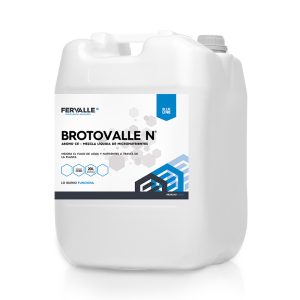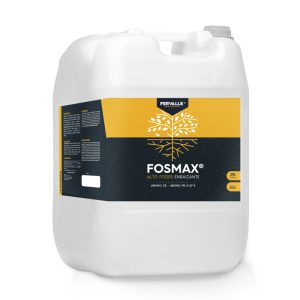CULTIVATION STRATEGY FOR

Olive cultivation
The olive tree is a perennial tree that is cultivated worldwide, surpassing the billion olive trees cultivated throughout the world. They are mainly concentrated in the Mediterranean region.
This crop is of great economic importance as it is a source of olive oil and table olives.
The olive tree, in the wild, is called acebuche. In this way, it provides small olives with little yield in terms of oil. However, when olive trees are cared for, the number and size of olives they produce are increased, as is the amount of oil they generate.
-

BROTOVALLE®N
Sap Inducer -

POTASIUM®PLUS
High Potassium Neutral -

FOSMAX®
fosmax, Powerful Rescuer, Rooting
» Olive plantation
·When are olive trees planted?
The planting of olive trees begins at the end of autumn in those areas where there is no risk of frost, while in the coldest areas it takes place at the beginning of spring.
·How are olive trees planted?
Generally, the commercial cultivation of the olive tree is carried out from grafts, since in this way the uniformity of the cultivation and better quality of the product is achieved, compared to sowing seeds.
As for the distance between trees, they are often planted with a distance of 6×6 meters.
Edaphoclimatic requirements
·Soil
Olive trees are a very rustic species that can grow practically in all types of soils, however, they prefer flat or slightly sloping soils, sandy loam, well drained, without excessive humidity and rich in organic matter. In addition, the pH must range between 5.5 and 8 and they are very tolerant to salinity.
·Climate
The ideal climate for olive trees is the Mediterranean climate. They like direct exposure to sunlight and do not tolerate temperatures below 20oC for several days in a row. However, they do need certain hours of cold for the correct development of the fruit.
» Care required by the olive tree
·Soil preparation for olive cultivation
The preparation of the land for the cultivation of the olive tree is based on:
- Leveling the ground
- Eliminating weeds and control their growth
- Minimum tillage of the soil
·Olive irrigation
Olive trees are drought resistant trees, but will provide better yields when irrigated. Ideally, water them from the beginning of the season until the first winter rains begin.
It is interesting to note that olive trees used to produce oil need less water than those used to obtain table olives.
·Olive tree pruning
The olive tree requires at least one pruning every two years with the aim of:
- Forming a strong trunk that resists heavy loads and wind
- Ensuring production
- Facilitating the harvest
- Facilitating fertiliser application
- Reducing the effects of the olive tree yielding fruit one year and none the next, that is, that the tree produces abundant flowers and fruits one year, but not the next.
- Prolonging the life of the tree
·Olive Pollination
Although most olive varieties do not need to be pollinated, there are others that require cross-pollination between varieties. It is recommended to plant at least three different varieties in the same plot to ensure pollination. Pollen is transmitted mainly by the wind.
» Nutrients necessary for the cultivation of olive trees
The main nutrients that olive trees require are:
Macronutrients
- Nitrogen: the most important nutrient for olive trees, necessary for the germination and formation of olives
- Phosphorus: when the olive trees are young, it favors the development of the roots. In addition, this element accelerates ripening and improves flowering and fruit set.
- Potassium: key in the formation of carbohydrates and fats, the opening and closing of stomata, photosynthesis, resistance to stress and the size and quality of the fruits
Micronutrients
- Calcium: reduces the possibility of diseases
- Magnesium: central part of the chlorophyll molecule
- Boron: It’s essential in the metabolism and transport of sugars
Fertilizer for olive trees
- What fertilizers does the olive tree need in its cultivation?
As we have already seen in the previous section, the main components that the olive tree fertilizer must contain are nitrogen, phosphorus, potassium, calcium, magnesium and boron.
For the organic cultivation of olive trees, organic fertilizers will be applied, such as manure, compost or earthworm humus, as well as those formulated based on algae, minerals or other natural elements.
Decomposing organic matter improves soil conditions and texture, regulates pH, conserves soil moisture, activates soil microorganisms, and increases nutrient uptake.
Some of the fertilizers recommended for growing Fervalle olive trees are Nitrux, Fosmax, Potasium Plus or Brotovalle N.
Nitrux is a fertilizer with a high nitrogen content, ideal for providing olive trees with the doses of nitrogen they need. Its advantages include:
- Tree roots rapidly absorb urea nitrogen, being a direct source of nitrogen necessary for plant growth and development.
- It is not leached, but the urea-formaldehyde nitrogen is conserved in the soil in a stable way
- The increase in temperature and the action of beneficial microorganisms will gradually break down the fertilizer and provide energy to the plant.
Fosmax presents a formulation of phosphorus and potassium of high assimilation along with calcium and other micronutrients. The main advantages and benefits of this product are as follows:
- It enables rapid assimilation of nutrients
- It provides higher nutritional bioavailability compared to traditional fertilizers
- It promotes the development of a strong root apparatus
- It improves flowering on the plant
- It improves fruit setting and ripening.
Potassium Plus is a fertiliser that provides potassium to plants. Its main effects are:
- It enhances the synthesis of sugars
- It enhances the color of the fruits
- It activates the synthesis of proteins involved in photosynthesis
- It participates in the maintenance of the turgidity of plant tissues
- It increases the absorption of nutrients
Potassium Plus is a fertiliser that provides potassium to plants. Its main effects are:
- It enhances the synthesis of sugars
- It enhances the color of the fruits
- It activates the synthesis of proteins involved in photosynthesis
- It participates in the maintenance of the turgidity of plant tissues
- It increases the absorption of nutrients
Brotovalle N is a compound fertiliser, rich in organic elements, copper, manganese and zinc. In addition, its formulation contains nitrogen, which boosts the growth and production of the crop. Its advantages include:
- It increases the flow of water and nutrients through the xylem and phloem
- It induces the plant to synthesise essential molecules
- It increases crop quality and yields
- It reduces the effects of unfavourable situations during the life cycle of the plant.
- It guarantees a homogenization in the size of the fruit.
»Olive harvesting
Generally, the olives are harvested between the months of September and October, and the harvest can be extended up to 5 months depending on the variety, the weather, the ripening, the quality of the juice, etc.




